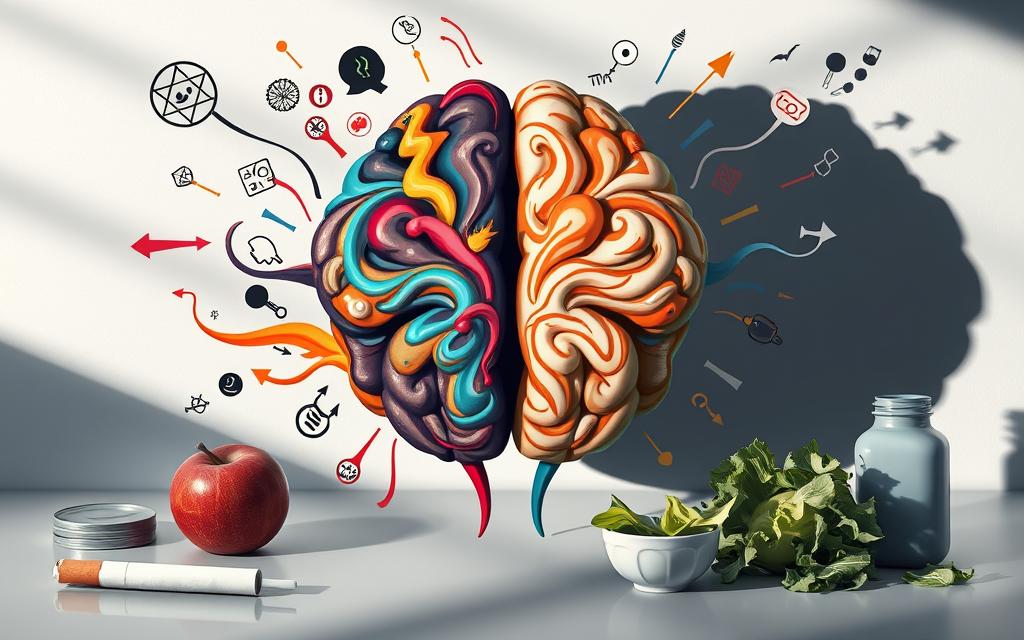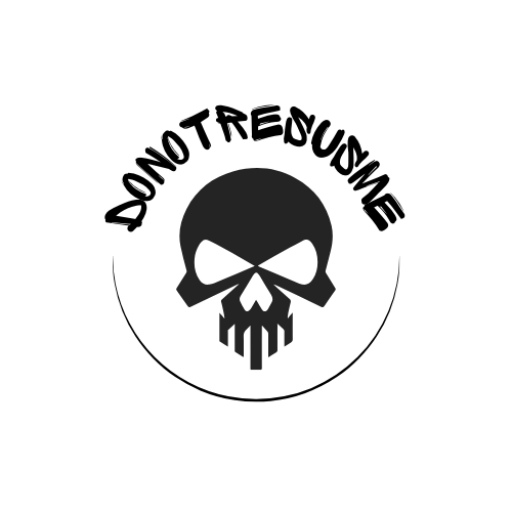Did you know most people face cognitive dissonance up to 5 times daily? This happens when our thoughts and actions don’t match. It can deeply affect our choices and relationships. Let’s dive into how cognitive dissonance impacts our lives, revealing the forces that guide our thoughts and actions.
Cognitive dissonance is that uneasy feeling when our beliefs and actions don’t match. It’s common, from smokers who care about health to those who want to be eco-friendly but struggle with it. This internal conflict makes us question our choices and actions. Let’s discover what causes this struggle and how to deal with it.
Join us as we delve into how our cognitive biases influence our views and actions. These biases shape us in ways we often overlook.
What is Cognitive Dissonance?
Cognitive dissonance is a psychological phenomenon that happens when our beliefs and actions clash. It’s that feeling of discomfort when our thoughts and actions don’t match. This feeling can cause inner turmoil as we try to make sense of it all.
Conflicting Beliefs and Behaviors
It occurs when we have thoughts that don’t fit together. For example, someone who knows smoking is bad but still smokes. Or someone who cares about the environment but drives a big gas-guzzler. These contradictory cognitions make us feel uneasy.
Leon Festinger’s Theory
Psychologist Leon Festinger first talked about cognitive dissonance. His Festinger’s theory says we all want our beliefs and actions to match. When they don’t, we feel dissonance. This feeling pushes us to change to feel better.
| Cognitive Dissonance Definition | Key Characteristics |
|---|---|
| The mental discomfort experienced when an individual’s beliefs, values, or behaviors are in conflict |
|
Learning about cognitive dissonance helps us understand how our minds work. It shows how we try to keep our sense of self and the world in order. This knowledge can help us see why we make certain choices and decisions.
Signs of Cognitive Dissonance
Cognitive dissonance shows up in many ways. Knowing the signs helps us understand and fix this inner conflict. Feeling uneasy before making a choice is a big sign of dissonance. This happens when our beliefs and actions don’t match, making us justify our choices to feel better.
Feeling embarrassed, ashamed, or guilty after acting against our values is another sign. This gap between what we do and who we think we are can be really tough. It might make us try to justify our actions or deny them.
- Feeling uncomfortable before making a decision
- Rationalizing or justifying a decision you’ve made
- Experiencing feelings of embarrassment, shame, guilt, or regret
- Engaging in behaviors due to social pressure or fear of missing out (FOMO)
Doing things just to fit in or because we don’t want to miss out (FOMO) is also a sign of dissonance. This shows we’re not being true to ourselves. It’s a big sign that we’re not living by our own values.
| Indicator | Description |
|---|---|
| Uneasy Feelings | Experiencing discomfort before making a decision due to conflicting beliefs and actions. |
| Rationalizing Choices | Justifying or explaining away decisions that contradict our principles or values. |
| Negative Emotions | Feeling embarrassed, ashamed, guilty, or regretful about our behaviors. |
| Social Pressure | Engaging in actions driven by a fear of missing out or a desire to conform, rather than personal desires. |
By recognizing the signs of cognitive dissonance, we can understand our inner struggles better. This helps us work on the conflicts inside us. It leads to more self-awareness and personal growth.
“The greatest weapon against stress is our ability to choose one thought over another.” – William James
Examples of Cognitive Dissonance
Cognitive dissonance is a fascinating psychological phenomenon that shows up in our daily lives. It’s about how our beliefs and actions can clash, causing an internal struggle. Let’s look at some examples that show how this works.
Smoking and Health Consciousness
Imagine someone who knows smoking is bad but still smokes. This person feels cognitive dissonance because their actions don’t match their beliefs. They might tell themselves the risks are small or that they can quit anytime, even when the facts say otherwise.
Ethical Eating Habits
Food choices are another place where cognitive dissonance happens. People who say they care about eating ethically might still choose meat or dairy sometimes. They might think their occasional choices don’t really affect the environment or ethics much.
Household Chores and Gender Roles
Cognitive dissonance can also be seen in how people divide household work. A couple might believe in equality but end up with one person doing most of the chores. This gap between what they believe and what they do can cause tension.
These examples show how cognitive dissonance affects us in everyday life. It pushes us to think about the gap between what we believe and what we do. Facing and fixing these gaps can help us grow and live more in line with our values.
| Example | Conflicting Beliefs and Behaviors | Potential Dissonance Reduction Strategies |
|---|---|---|
| Smoking and Health Consciousness | Belief: Smoking is harmful to health. Behavior: Continues to smoke. |
|
| Ethical Eating Habits | Belief: Commitment to ethical and sustainable eating. Behavior: Indulging in meat or dairy products. |
|
| Household Chores and Gender Roles | Belief: Egalitarian views on gender roles. Behavior: Falling into traditional patterns of division of labor. |
|
Causes of Cognitive Dissonance

Cognitive dissonance happens when our beliefs and actions don’t match. It’s often caused by social pressure and our duties, or by new information we learn.
Social Pressure and Obligations
Society, our friends, and our sense of duty can make us feel uneasy. This happens when our personal views or actions don’t meet others’ expectations. For example, someone who knows smoking is bad but does it to fit in with friends.
New Information or Discoveries
Learning new things or discovering unexpected facts can also cause cognitive dissonance. When our current beliefs are challenged, we might feel confused. This is especially true when making decisions, where we must weigh new info against social pressure.
The need to keep our beliefs and actions consistent is what drives cognitive dissonance. When our beliefs and actions don’t match, we feel uncomfortable. This discomfort pushes us to find ways to resolve the dissonance.
“Cognitive dissonance is a powerful force that can shape our decisions and behavior in profound ways.”
Effects of Cognitive Dissonance
Cognitive dissonance can deeply affect people’s minds and feelings. It creates a mix of stress, anxiety, and other negative emotions. This inner conflict can also hurt how we see ourselves, making us doubt our self-worth.
Psychological and Emotional Impact
When our actions don’t match our beliefs, it causes discomfort. This discomfort can lead to feelings of frustration and being stuck. Cognitive dissonance may cause stress, anxiety, and even depression. It can make us feel trapped and question our choices.
- Cognitive dissonance can make us feel embarrassed or ashamed.
- It may lead to regret as we doubt our decisions.
- Not dealing with it can hurt our self-image and self-esteem.
Knowing how cognitive dissonance affects us is key. It helps us find ways to deal with it and improve our well-being.
“Cognitive dissonance is a powerful force that can shape our thoughts, emotions, and behaviors in profound ways. Recognizing its impact is the first step towards regaining control and building healthier, more authentic lives.”
how cognitive dissonance works

Cognitive dissonance happens when our beliefs, values, or actions clash. This clash creates tension inside us. To ease this tension, we use defense mechanisms to reduce dissonance. Knowing about cognitive dissonance helps us understand our thoughts and actions better.
Defense Mechanisms
When we face cognitive dissonance, we might use defense mechanisms to lessen the conflict. Some common ones are:
- Rationalization: Making logical excuses for our actions or beliefs, even if they’re not fully true.
- Denial: Not accepting information that goes against our beliefs or actions.
- Selective Perception: Paying attention only to info that backs our views and ignoring the rest.
- Trivialization: Making the conflicting information or beliefs seem less important.
Dissonance Reduction Strategies
People also use dissonance reduction strategies to deal with the tension. These strategies are:
- Changing Behavior: Adjusting our actions to match our beliefs and values.
- Changing Beliefs: Changing our beliefs to match our actions or behaviors.
- Seeking Supportive Information: Looking for info that supports our beliefs or choices.
- Compartmentalization: Keeping conflicting beliefs or behaviors separate in our minds.
Understanding cognitive dissonance helps us become more aware of ourselves. It lets us find ways to handle situations where our thoughts, beliefs, and actions don’t match.
Consequences of Unresolved Dissonance
Cognitive dissonance is a psychological conflict that happens when our beliefs and actions don’t match. If we don’t deal with this, it can harm our physical, mental, and emotional health.
One big issue with not solving cognitive dissonance is that we might keep doing things that are bad for us. We might not be able to fix the gap between what we know is right and what we do. This could mean we keep living an unhealthy life or ignore things that are wrong.
Also, dissonance can lead to addictions as people try to ease their discomfort with harmful habits. It can also cause problems in relationships. Not being able to match our thoughts and actions can hurt our connections with others and break trust.
The effects of not solving dissonance can also hurt our mental health. We might feel stressed, anxious, or depressed. The constant struggle inside can make us feel stuck, guilty, and unable to move forward.
In the end, the consequences of unresolved cognitive dissonance are big and can really change our lives. By facing and dealing with this issue, we can work on making our beliefs, actions, and values match. This can lead to personal growth, better health, and happiness.
| Consequence | Description |
|---|---|
| Perpetuation of Unhealthy Behaviors | Individuals may continue engaging in habits or actions that they know are harmful, unable to reconcile the discrepancies between their beliefs and behaviors. |
| Development of Addictions | Unresolved dissonance can lead individuals to seek out self-destructive coping mechanisms, such as substance abuse, to alleviate the psychological distress. |
| Relationship Problems | The inability to align thoughts and actions can strain interpersonal connections and erode trust, leading to relationship difficulties. |
| Mental Health Issues | The constant inner conflict can be mentally and emotionally draining, contributing to the development of stress, anxiety, and depression. |
Cognitive Dissonance in Media and Pop Culture
Cognitive dissonance is a fascinating topic that has caught the eye of many in media and pop culture. Movies like “Mean Girls” and TV shows like “Friends” show us how our beliefs and actions can clash. This clash is what cognitive dissonance is all about.
In “Mean Girls,” Cady Heron faces the tough world of high school cliques. Her values of kindness clash with the reality of social hierarchies. This is a perfect example of cognitive dissonance. In “Friends,” the characters often struggle with their values versus social pressures. These moments are both funny and thought-provoking.
“The Truman Show” takes cognitive dissonance further by showing Truman Burbank that his life is fake. This makes us question reality and the power of deception. It’s a deep dive into the human mind.
In pop culture, cognitive dissonance also appears. “Irresistible” explores political operatives dealing with party loyalties versus personal interests. “Stand By Me” challenges the characters’ beliefs about their abilities and worth as they grow up.
These stories remind us that cognitive dissonance is a common human experience. They make us think about our own biases and behaviors. They show us how our inner and outer worlds can clash.
| TV Show/Movie | Example of Cognitive Dissonance |
|---|---|
| Mean Girls | Cady Heron’s struggle between her beliefs about kindness and the pressures of high school social hierarchies |
| Friends | The characters’ personal values conflicting with the expectations of their social circles |
| The Truman Show | Truman Burbank’s realization that his entire life has been a fabrication |
| Irresistible | Political operatives navigating the clash between party allegiances and personal interests |
| Stand By Me | The characters’ beliefs about their own capabilities and self-worth being challenged |
These examples help us grasp the complex nature of cognitive dissonance. They show its impact on how we see the world, make decisions, and interact with others.
Factors Influencing Dissonance Strength
The strength of cognitive dissonance we feel can be shaped by several key factors. Knowing these factors helps us see how dissonance affects our thoughts, feelings, and actions.
One main factor is how much we value the conflicting beliefs or behaviors. The more we care about a belief, the stronger the dissonance when it clashes with another belief. For example, loving the environment but also enjoying big cars makes the dissonance stronger than if the beliefs were less important.
Also, having more dissonant beliefs makes the dissonance stronger. The more things we have to reconcile, the harder it gets. Trying to balance many conflicting beliefs or actions is tough and can make us feel more upset.
Finally, how central the conflicting beliefs are to who we are matters a lot. If these beliefs are key to our values or identity, the dissonance is deeper and harder to fix. Questioning our core beliefs can really upset us and make us defend them strongly.
| Factor | Description | Impact on Dissonance Strength |
|---|---|---|
| Importance of Beliefs | The value and significance we place on the conflicting beliefs | The more important the beliefs, the stronger the dissonance |
| Number of Dissonant Beliefs | The quantity of inconsistent beliefs or behaviors | The more dissonance, the more challenging the reconciliation |
| Centrality of Beliefs | How fundamental the conflicting beliefs are to our identity and self-image | The more central the beliefs, the more intense the dissonance |
Understanding these factors helps us deal with cognitive dissonance better. We can find ways to handle the conflicts in our lives.
Cognitive Dissonance and Decision-Making
Making choices in life can be hard, and our minds often struggle with cognitive dissonance. This happens when what we believe and do don’t match. It makes us try to justify ourselves, look for certain information, and downplay conflicting beliefs.
When a decision goes against what we think, we feel uneasy. This unease makes us look for information that supports our views. We might ignore facts that go against what we want to believe. This can lead to choices that aren’t the best.
Cognitive dissonance also changes how we see things. We might not take seriously things that don’t fit with our beliefs. At the same time, we might think more highly of things that support our choices. This can make our decisions not reflect what’s truly good for us.
Knowing how cognitive dissonance affects our choices is key to making better decisions. By being aware of our biases and looking at different viewpoints, we can make choices that truly reflect our values.
| Cognitive Dissonance Impact on Decision-Making | Potential Consequences |
|---|---|
| Selective information-seeking | Overlooking important factors, leading to suboptimal decisions |
| Minimizing the importance of conflicting beliefs | Prioritizing short-term comfort over long-term well-being |
| Justifying decisions to reduce dissonance | Reinforcing biases and perpetuating problematic behaviors |
By understanding cognitive dissonance and decision-making, we can make choices that match our values. This leads to more satisfying and meaningful outcomes.
“The greatest obstacle to discovery is not ignorance – it is the illusion of knowledge.”
– Daniel J. Boorstin
Conclusion
We’ve explored how cognitive dissonance affects our beliefs and choices. It shows the power of this psychological phenomenon. By knowing the causes, signs, and effects, we can handle its discomfort better.
Cognitive dissonance is common in humans. It helps us understand ourselves and our reasons better. By facing it, we can make better choices that help us grow and be happier.
So, remember the key points of cognitive dissonance as you go through life. It can help you make choices that match your values. Starting to improve yourself often means noticing the dissonance inside you.

